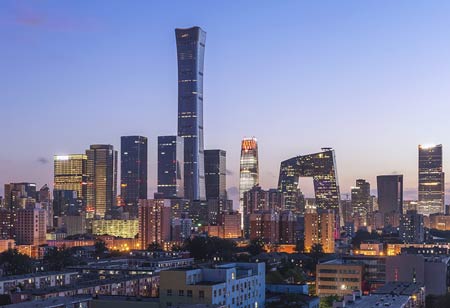THANK YOU FOR SUBSCRIBING
Heilongjiang Pilot Free Trade Zone Witnessing Extensive Reforms
In the last two years, the authorities have introduced 206 reform experiences from free trade zones and accelerated the region’s exploration

By
Apac CIOOutlook | Monday, October 25, 2021
Stay ahead of the industry with exclusive feature stories on the top companies, expert insights and the latest news delivered straight to your inbox. Subscribe today.
In the last two years, the authorities have introduced 206 reform experiences from free trade zones and accelerated the region’s exploration.
FREMONT, CA: In China's Harbin sub-area of Heilongjiang pilot free trade zone (FTZ), record-breaking 8787 new enterprises have been established over the last two years. 30% of the enterprises in the region are high-tech enterprises. The exports 2n imports from Russia has doubled, and the Harbin sub-area has witnessed changing reforms and development. FTZ, which is China's northernmost free trade zone, is spread across 119.85 square kilometers. The zone has three sub-areas, with one in the capital of Harbin and the other two in the city of Heihe and Suifenhe near the Russia-China border.
Located on the bank of the Songhua River, the Harbin sub-area has formulated a plan of building the technology and innovation center, business convention and exhibition center, financial center, International culture and tourism center, and highland for emerging industrial ecosystems. The local authorities in the region also aimed at building industrial clusters scaled at quasi-100 billion yuan and four other scaled at 50 billion yuan. It also aims to boost the aggregation of industrial ecosystems such as Shenzen (Harbin) Industrial Park. The Harbin sub-area administrative committee has constantly reiterated that deepening reforms and innovations are the most prominent characteristics of the free trade zone.
In the last two years, the authorities have introduced 206 reform experiences from free trade zones and accelerated the region’s exploration. The local authorities have initiated reform measures to streamline the approval process and improve regulation, which attracted numerous large and global projects with large-scale and prominent potential to settle in the region. Based on its industrial foundation and competitive advantages, the Harbin sub-area has implemented a series of policies from the supply side. The region also has several policies that other industrial zones do not offer, and businesses can also negotiate their requirements with the local authorities. The aforementioned facts depict that the Harbin sub-area is truly making a way into the global market and benefiting enterprises, further accelerating market vitality and underscoring the agglomeration effect of free trade zones. The sub-area initially was formed with five industrial ecosystems with the scale of tens of billions yuan in green food, equipment manufacturing, finance and cultural tourism, finance, and biomedical. The biomedical industrial ecosystem was recently approved to be listed on the first set of strategic emerging industrial groups in China.





